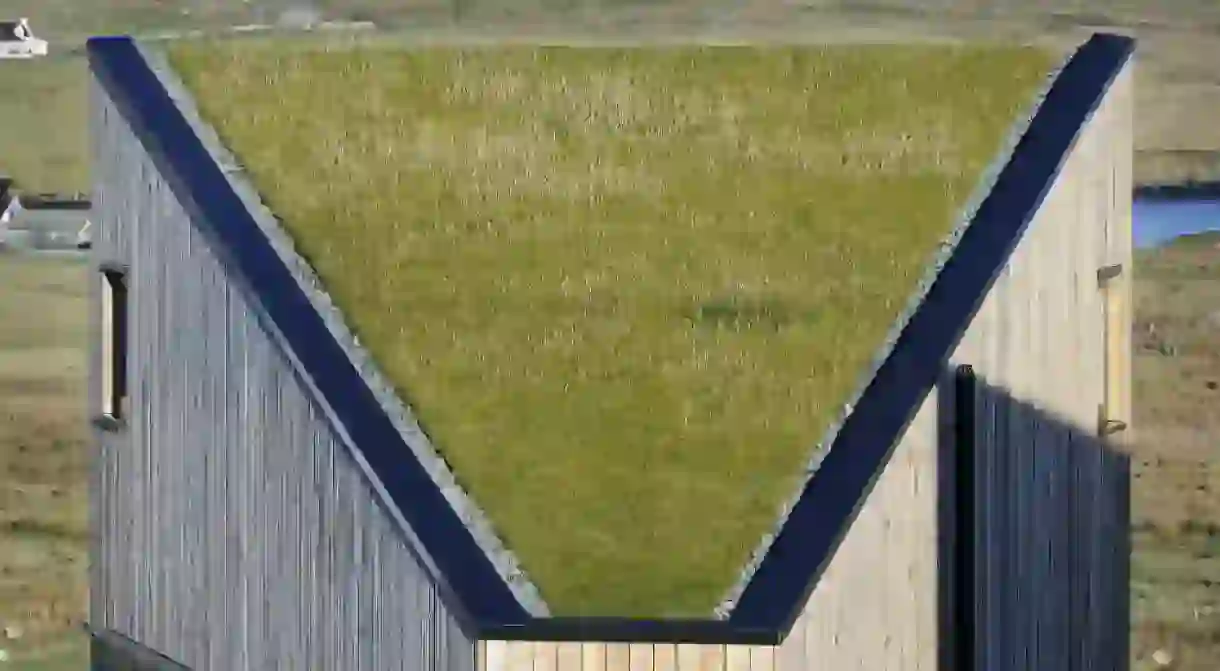The Striking Modern Buildings Redefining The Scottish Highlands

Gone are the days when the only housing options available to those in Scotland were traditional buildings such as blackhouses and 18th-century white cottages. An ever-growing phenomenon, the Scottish Highlands and Islands are witnessing a new architectural trend — modern building designs that not only pay homage to Scottish vernacular architecture, but embrace the ways of contemporary society with a firm nod towards the future.

Sleek, fluid and inoffensive to the natural environment, these modern buildings slip right into the astonishing surroundings and scenery unique to bonnie Scotland, thanks to the help of leading Scottish Architecture firms like Dualchas and Rural Design.
These pioneering firms are the brainchildren behind some of the most astonishing works of architectural art, while successfully welcoming key design elements like social, economic and environmental sustainability. Once more, these buildings represent a strong sense of cultural identity and unassumingly compliment the wild Scottish landscapes and tumultuous elements, rather than serving as an unwanted eyesore of a threat.

Wholly talented and revolutionary, Rural Design are champions of the fluidity and ever-changing presence of architecture. Immense amounts of intuition and innovation have led to numerous successful residential, community and education projects. One that stands out is the Tinhouse. Designed and self-built by founders Alan Dickson and Gill Smith, corrugated metal sheeting, simple yet sharp design, clean lines and of course the dramatic location, all add to the wonder of this building. Tinhouse sits on the northwestern tip of Skye gazing out to The Minch, the water which divides the Outer and Inner Hebrides.

The swathes of silver on the corrugated aluminium mirror the motion of the dancing waves and effervescence of the encompassing wispy clouds, a testament to the immense talents of Rural Design for creating a structure capable of complimenting the climate. Just as aesthetically appealing as the exterior, the interior is comprised of plywood cabinets, concrete floors, timber boarding, and contemporary accents, which render it a perfect fusion of past, present and future. On tap for all to appreciate, the Tinhouse is available to let for a holiday break.
Loch Maree, Turf House and Black House are just a few more examples of this revolutionary new train of architectural thought.



RIAS award-winning architectural wizards Dualchas are another invincible contender in the contemporary Scottish architecture game. Fresh ideas, leading technology, revolutionary designs and a respectful outlook regarding place garner them well-deserved praise for their remarkable structures.
Worthy of a standing ovation, the Dualchas designed Colbost House is nestled in Waternish, Skye, with epic views of Dunvegan Bay and Harris. Split into four separate buildings — so to not detract from the all-seeing landscape — the concept of Colbost was conceived by drawing inspiration from a nearby black shed. Corrugated aluminium rooftop panels coated with protective black finish, concealed gutters, flush aesthetics, meticulously planned intricacies like the air-sourced heat pump and an impressive partition in the form of a 3 metre sliding oak screen, all add to the enormity of its appeal.
Interior wise, Dualchas more than often draw upon traditional Scottish accents like tweed, tartan and deer, before waving a simple contemporary wand, adding a sprinkling of charm and personality.

Each as breathtaking and intriguing as the next, The Shed, Scotasay, Cliff House, Faire Chaolais, and Black House possess otherworldly qualities, yet champion this uncanny ability of mingling with the natural environment, as if they have been there since the beginning.



These masterpieces by Rural Design and Dualchas are a prime example of the notable shift in traditional Scottish Highland architecture from archaic and outdated, to contemporary and state-of-the art. Although visually futuristic in some respects, there’s no denying the reciprocal understanding between the buildings and accompanying land, with an unwavering appreciation of the past.














